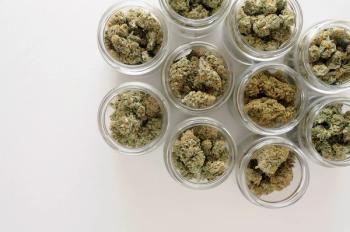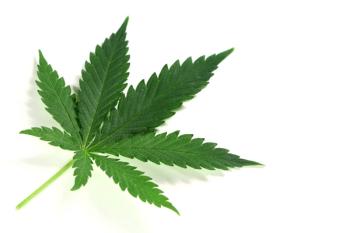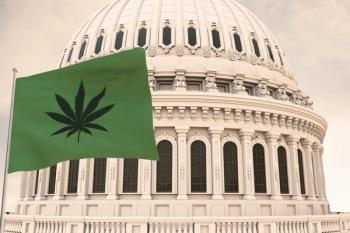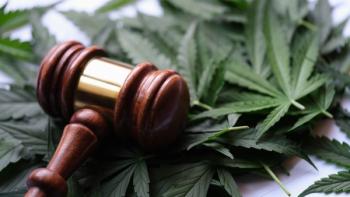
Cannabis Science and Technology
- May 2021
- Volume 4
- Issue 4
There’s a Surplus of Hemp in the Market: What Happens in 2021?
There’s more hemp out there than the industry knows what to do with.
Once the 2018 Farm Bill decriminalized hemp cultivation at the federal level, growers of everything from canola to tobacco started seeing green in the idea of dedicating acreage to the cannabis plant—which, as the source of cannabidiol (CBD), also happens to be the source of one of the most hyped botanicals to hit the health-and-wellness sector in years.
But as often occurs when entrepreneurial spirits rush in to satisfy what they suspect will be stratospheric demand, these newly minted hemp farmers overshot the mark and grew more hemp than the market could absorb.
When
More than a year later—and a world away, given all that’s happened since then—the situation remains largely the same, with more hemp out there than the industry knows what to do with.
Supply Over Demand
Portland, Oregon-based Whitney Economics monitors the cannabis space closely, and according to founder Beau Whitney, “The excess inventory of biomass, specifically for CBD, carried over into 2020.”
He attributes much of the overage to what he calls “an immature supply chain,” along with a lack of buyers at the processing level. “Based on market prices at the time, it would have taken an average of $1.7 million for every licensed processor to purchase all of the biomass produced in 2019,” he observes. Alas, “The processing industry was underfunded.”
Moreover, with COVID-related retailing restrictions compounding somewhat dampened consumer demand for CBD products, consumer packaged goods (CPG) brands had little incentive to top off their inventories, and thus dialed back their orders into the processing sector, exacerbating the surfeit of idle hemp.
Survival of the Fittest
Perhaps that’s why Eric Steenstra, Vote Hemp’s president, suggests that 2020 might best be characterized as a year of consolidation and “survival of the fittest” within the industry—trends he foresees persisting into 2021. “Many farmers who jumped in speculatively have already dropped out after realizing that supply had outpaced demand,”
he says.
Yet more hemp cultivators actually jumped into the game last year to replace those who’d exited, Whitney notes, adding that the number of hemp-processing companies in the US grew by more than 100% in 2020, too.
Either way, Steenstra maintains that “hemp is not yet a commodity” and expects the current volatility to continue for the foreseeable future.
Year of Headwinds
If it does, it’ll be more of the same for the industry, as 2020 served up its share of trials.
Whitney assigns no small blame to the COVID-19 pandemic for stymieing sector manufacturers’ main channel: retail. And while savvy brands pivoted—“as usual,” he says—toward strengthening their online presence, “the inability to advertise on Google, Facebook, etc., hurt.”
Steenstra also declares the pandemic “a significant factor” in shaping industry outcomes in 2020, principally for its role in forcing most sales online. Nevertheless, he predicts, “As the virus begins to dissipate following significant vaccination, we should see retailer sales of CBD products rebound.”
Regulatory Uncertainty
That’s the hope. Yet even if vaccinations accelerate and the country resumes something resembling normal, the path ahead won’t be crystal clear for the CBD sector or the hemp supplies that feed it.
Why? “Regulatory uncertainty has been the main contributor to the suppression of the market and remains the top existential threat to the industry,” Whitney asserts.
Steenstra agrees. “FDA and its failure to regulate are the biggest limiting factors on CBD sales,” he says, adding that although the agency submitted proposed enforcement guidelines to the Federal Office of Management and Budget in 2020, those guidelines have yet to receive approval.
So industry members wait in limbo. “It’s difficult to predict when CBD regulation will finally be resolved and how,” Steenstra laments. “Will it be via FDA regulation, or legislation?” Regardless, he says, “When it does, we’ll see things shift back to a seller’s market for hemp products.”
Side Issues
Then, perhaps, the sector will have the bandwidth to address other issues that dog it.
For example, says Brian Zapp, creative director, Applied Food Sciences, “The narrative I think we should be wary of is excusing growers who simply aren’t working with genuine ‘hemp’ varietals.” With some farmers growing “marijuana-hybrids” formally defined by U.S. Pharmacopeia (USP) as THC/CBD-intermediate type II chemotypes, “It’s not surprising how many businesses are struggling to keep their THC levels within the legal range” of not more than 0.3% on a dry-weight basis, he says.
Trial plots across the country are helping researchers better understand seed genetics to get a handle on the issue, he says, “but it will take time for hemp to become more of a landrace industrial crop with more predictable levels of active compounds.”
In the meantime, European growers have long cultivated “true industrial hemp,” which USP defines as type III CBD-dominant chemotypes, and the European Commission recognizes 64 varieties of authorized non-narcotic industrial hemp in an EU plant-variety database. Zapp is confident the US will get there, “but we need to remain patient and careful not to overreact to the inevitable variables that come up.”
For his part, Tim Hitchman, vice president, operations, CV Sciences, expresses concern that the current oversupply has motivated some hemp and hemp-extract suppliers to “aggressively diversify their portfolios to provide differentiated offerings and promote hemp cultivars and extracts high in minor cannabinoids such as CBG (cannabigerol) and CBN (cannabinol).”
Despite burgeoning interest in these compounds, Hitchman points to a lack of published safety data on their use and concludes that “in this time of excess supply, it’s more important than ever to follow best practices in choosing partners to ensure that ingredients and products are made under cGMP guidelines. Not all companies are yet able to comply.”
Growing Pains, or Growing Potential?
Returning to market conditions, Whitney expects hemp prices to continue falling below production costs as cultivators and processors—he cites GenCanna as one—leave the market. But he doesn’t expect supplies themselves to come into balance anytime soon.
In fact, “Whitney Economics does not see a recalibration but rather a supply expansion,” he says. Forecasts project licensed hemp acreage going from 525,000 acres in 2019 to 9.0 million acres by 2030—“and that,” he adds, “is extremely conservative.”
Where will all the hemp go? He thinks the expansion could drive support for “major markets” including human and animal feed, automotive, textiles, construction, plastics and semiconductors, as well as holistic medicines.
And Steenstra himself is bullish on hemp’s future in food. “Sales of hemp foods continue to grow at a double-digit rate,” he notes, “and hemp will likely play a bigger role in the plant-based meats trend going forward—driving further demand.”
Whitney believes that for the market to reach its true potential, “It will take visionaries willing to invest not only in the industry’s supply side, but in creating the demand, as well.”
Steenstra chalks it all up to a bump in the road. “I think we’re mostly seeing typical growing pains for a new crop,” he wagers. “Businesses and brands with a strong plan to survive from now until FDA regulation will thrive.”
Besides, interest in hemp CBD abides. As Steenstra says, “CBD isn’t just a fad or hot trend. These products work, and millions of consumers have used them with good results. Hemp-derived CBD-rich extracts are here to stay.”
Reference
DISCLAIMER
This article was originally published by Nutritional Outlook in March 2021. For the original piece, please visit:
How to Cite this Article
K. Decker, Cannabis Science and Technology 4(4), 40-42 (2021).
Articles in this issue
Newsletter
Unlock the latest breakthroughs in cannabis science—subscribe now to get expert insights, research, and industry updates delivered to your inbox.





